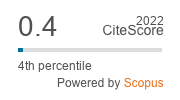Effects of magnetic field on the histology of silk gland of silkworm, Bombyx mori L. (Lepidoptera, Bombycidae)
DOI:
https://doi.org/10.33307/entomon.v47i4.797Abstract
Magnetic field influences the physiology and development of living organisms, depending up on the strength of magnetic field. In silkworm, it enhances enzymes, proteins and nucleic acids of silk gland. On this line, histology of silk gland of silkworm Bombyx mori L. (Lepidoptera, Bombycidae) was studied after its magnetization, at 3500 G and 4000 G separately. Exposure of silkworm to magnetic field resulted in increase in diameter of its silk gland/lumen of silk gland/space occupied by secretory substance (silk protein-fibroin). The studies showed 46.15 and 21.19 per cent increase in diameter of silk gland of larvae exposed to 3500 G and 4000 G magnetic field respectively than that in control larvae. Larvae treated with 3500 G magnetic field and 4000 G magnetic field exhibited 51 per cent gain and 1.29 per cent loss in the size of secretory substance respectively than that of control group larvae. Cellular thickness is more in magnetized larvae than that of control larvae. This is favourable for sericulture.


